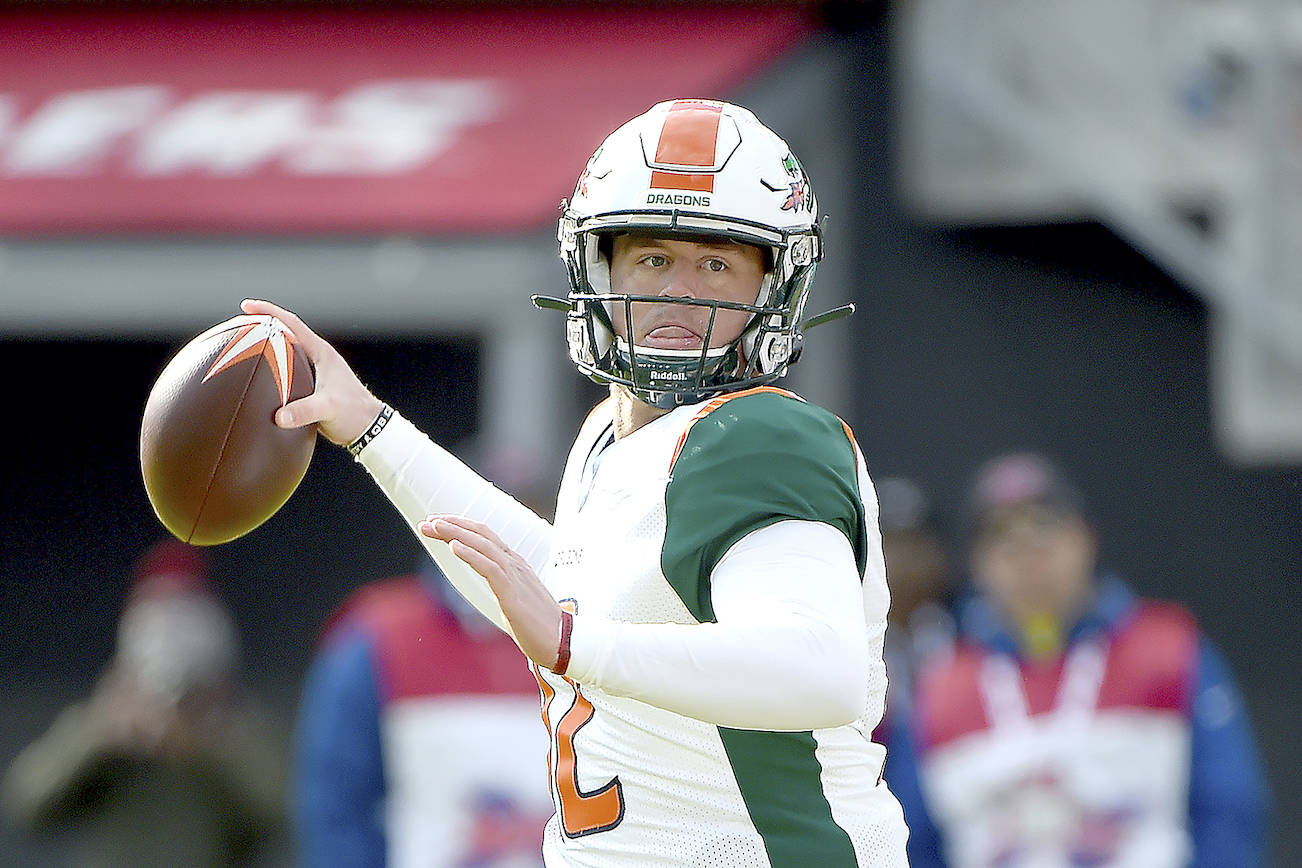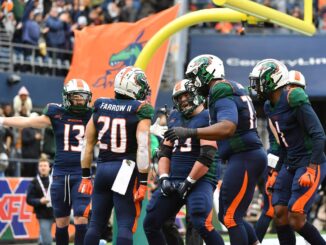
It could be false hope, but at first glance, the XFL just might have the staying power that other “minor/developmental” football leagues have lacked. And after diving into the history of those other leagues, I like the XFL’s chances even more.
Depending on your age, you may have heard tales from your parents or grandparents about how much fun the AFL was for football fans in the 1960s. If you were wondering if you were going to have a similar story to tell your kids or grandkids, you’re in luck! The XFL, which officially kicked off their regular season last weekend, is this generation’s AFL.
If you had not heard of the AFL before today, you’re probably not alone. Today you know most of those teams as the “AFC” half of the NFL. But the good news is that the AFL didn’t go anywhere – a team that started out as the Dallas Texans in the AFL just won the Super Bowl two weeks ago, and they are currently known as the Kansas City Chiefs. The team that has appeared in or won the Super Bowl 9 times since 2001, started out as an AFL Franchise in 1960 known then as the Boston Patriots, and there are six other franchises in the NFL today that began in the AFL. While it only lasted a decade before merging with the NFL, the AFL and its history live on, and the spirit of the AFL is now alive and well in the XFL.
The USFL is the lesser remembered (partially due to its 4-year lifespan from 1982-86) and even less spoken about step-sibling of the AFL. You may not recall hearing of the league before, but some of the NFL’s best players started out their professional careers in the USFL, including Hall of Famers Steve Young, Jim Kelly, Reggie White, and Gary Zimmerman, along with superstar running back Herschel Walker (who the Dallas Cowboys owe three of their Super Bowl rings).
The USFL featured talented players who either didn’t want to play in the NFL for the team that drafted them or guys who wanted a bigger payday—or some who just needed another shot. Either way, it was a lot of fun in what amounted to a wild west format of professional football. Regardless of how you view them, Burt Reynolds and Donald Trump were among the team owners, which led to even more fan intrigue. The USFL only lasted a few seasons though, settling a lawsuit between the USFL and NFL for a whopping $3.76 after attorney fees and the league disbanding.
Where these leagues failed, the XFL has the opportunity to succeed. The pitfall of every new league is the same—money. It’s easy to get new owners to buy into the concept of making money, but what has happened in the past is exuberant spending without providing a foundation for a sustainable system or product.
What made the AFL and USFL different from the NFL? And how can the XFL capture the same excitement for fans without merging or going out of business?
For starters, the rules were bent to make a more entertaining fan experience. Just a few examples of AFL innovations were adding the option of a two-point conversion after a touchdown, putting player names on the back of jerseys, putting a game clock on the scoreboard, and extending the regular season by two games. These may sound like small potatoes, but they made for a much more inviting fan experience in the 1960s. You may see coach’s challenges as a normal part of the NFL today, but the USFL was the first league to give coaches the option to challenge the ruling on the field via replay in 1985, something not adopted by the NFL until 1999.
But why should any of this impact the casual NW football fan? For starters, this is the first non-NFL professional football league to feature a team in Seattle. Sure, you’ve seen any number of arena league, indoor league, lingerie league, etc crop up on a field near you, and while they may be fun as a gimmick, they are not the real deal.
This may not be the NFL level out of the gate, but it is a legitimate professional football team playing their games on TV from the same field that your Seahawks play on. With no football to speak of between now and August, what do you have to lose giving them at least a chance?
Beyond being the best alternative to the NFL during their offseason, it’s just a fun new brand of football that anyone can enjoy, so long as you have a heartbeat and access to some local channels (or cable, but more on that later). Both the AFL and USFL had broadcast deals with ABC, and the USFL even had a deal with ESPN, so we can’t count on networks backing the league as the sole reason to believe in the concept, but it doesn’t hurt giving fans access to the sport. Ease of access is rule one in gaining a following, and the XFL has that down already.
Seattle plays Tampa Bay this Saturday at 2pm on Fox, which anyone with a tv and an over-the-air antenna or cable can view. Or, you can visit any number of sports bars (or just bars for that matter) across the nation. Why not give it a chance? Sure it’s not the NFL; I’ll beat that horse dead all day long. Instead what it is, is a bridge between the NCAA and the NFL, for players who either need a second look or never got a first look. There are something like 2,640 starters in college every week and only 704 starting spots on an NFL roster week to week. Where do the other 1,936 talented players end up? I can’t give you all the details, but I can tell you that at least 176 of them are playing in the XFL for the next several weeks.
If you want to know more about the XFL broadcast schedule (2 games each Saturday, 2 games each Sunday) follow this link.
Something else that’s a fun thing to track, are the quirky rule changes. And when you stop to think about it, some of them (if not all) are downright genius, and the NFL should take notice. Here is a link to the entire rule book, but below are a few choice excerpts.
Kickoffs are a little different. The kicking team starts at its own 30-yard line, while the return team lines up at the opposite 30-yard line. The kicking team coverage lines up at the return team 35, and neither team can move until the returner catches the ball. This should reduce injuries as well as make kickoffs more interesting, especially with the number of yards the potential penalties will incur, and I am not talking about holding or clipping.
For example, a touchback moves the ball to the return team’s 35-yard line. Out of bounds kicks and kicks that fall short of the 20-yard line move the ball to the kicking team’s 45-yard line. That’s a lot of pressure on the kicker to get the ball to be contacted somewhere beyond the return team’s 20-yard line.
Punts are even more panic-inducing; gone are the “coffin corner” punts of old. If the ball goes out of bounds inside the 35-yard line, it is a “Major” touchback and the ball goes to the return team’s 35-yard line. If a punted ball lands in the return team’s end zone or goes out of the end zone the result is a “Major” touchback, and the ball goes out to the return team’s 35-yard line. You’ll see a lot of offenses opting to go for it on 4th down if they are near midfield if they are just giving up 10 yards on average anyway.
Touchdowns and overtime should bring on a lot of conversation as they make each attempt more interesting. After scoring a touchdown, the scoring team has the option of trying to convert from the 2, 5, or 10-yard line, and can collect 1, 2, or 3 points depending on which yard line they choose to start at. The key here: No more boring extra points. The action after a touchdown will be exactly that—action.
If the defense can force a turnover and return the ball all the way to the opponent’s end zone, they now collect the points the offense was trying to get.
Overtime, in all honesty, is how overtime should always be: a shootout. Each team will line up its offense and defense at opposing end zones. Each offense will take a turn attempting to score, with each conversion worth 2 points. The team that has the most points after five turns each is awarded the victory. If no team has outscored the other, then another shootout entails. And another, and another, until a winner prevails. It’s the only way to know who really won, and who really lost. Any other method just adds excuses.
That’s the XFL in a nutshell. It’s fun, it’s new, and you are out of excuses or alternatives. Some people just won’t watch on principle, and that’s fine. But if you’re a football fan that already misses the NCAA and NFL products and don’t know how you’re going to fill the sports time between now and March Madness, you may as well give it a chance.
It’s possible you might not like it. And that’s ok.
Then again, you might just love it.





Nice information. And you’re right…the XFL is fun and enjoyable and not gimmick football. I’m not a pro sports fan but I have quickly become an XFL fan.